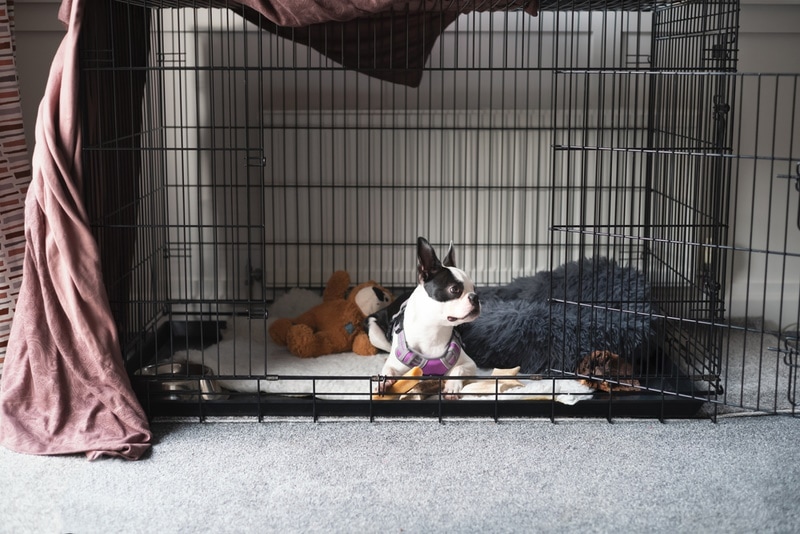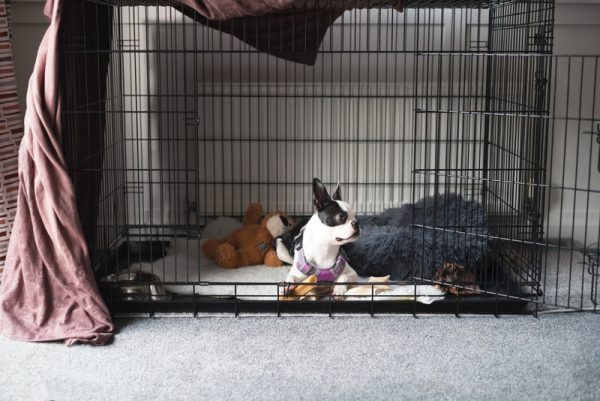A crate is one of the essential items you must purchase before bringing home a Boston Terrier. If you are a first-time pet parent, you probably have many puzzling questions. What crate size is ideal for a Boston Terrier? Do you need different crate sizes for puppies and adults?
Generally, a 24″L x 18″W x 19″H crate is perfect for your Boston Terrier irrespective of your dog’s life stage.
Boston Terriers are small dogs that weigh 15 to 25 pounds and stand at 16 to 17 inches tall. When choosing a crate, you must ensure it is neither too large nor too small. A 24″L x 18″W x 19″H crate can suffice whether you have a puppy or a full-grown adult. You’ll only need to adjust the divider based on your pet’s size.
Read on to learn why this crate is ideal. We will also share some tips to make crate training your Boston Terrier a breeze.
What Is the Right Crate Size for a Boston Terrier?
A Boston Terrier needs a crate that measures 24″L x 18″W x 19″H. Although the size is a perfect match for an adult, it can also suffice if you have a newly adopted puppy. The breed reaches full physical maturity in 18 to 24 months, after which it stops growing. You can always use divider panels to make the crate feel cozier.
A 24″L x 18″W x 19″H crate can offer a comfortable crating experience based on a Boston Terrier’s overall size. This enhances the odds of your pet associating the facility with a relaxing space where it can rest, sleep, or hide when necessary. It offers just enough room to give your furry friend the natural feeling of comfort and safety.
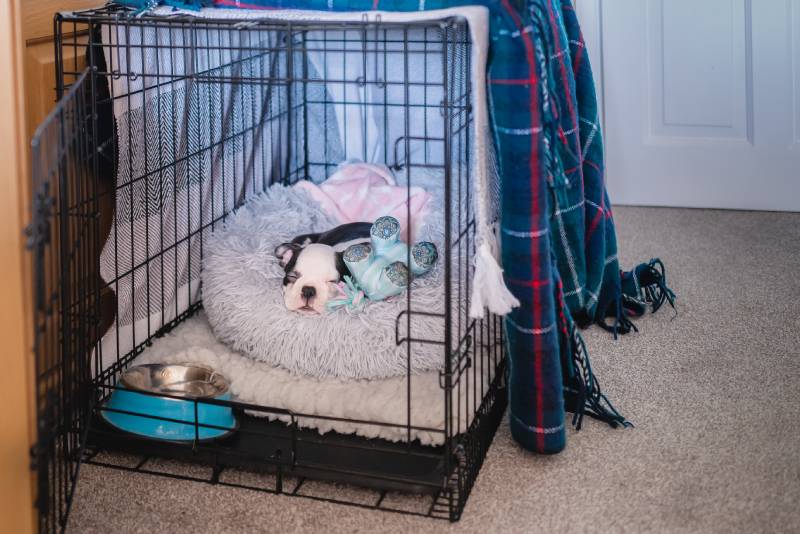
Why Choose the Right Crate Size for Your Boston Terrier?
Depending on your budget, space, and where you shop, it can be a little tempting to opt for a smaller or bigger crate size. Don’t.
Choosing the correct crate size is crucial to ensuring your pet positively associates time spent in the facility. If a crate is too small, your pet will feel trapped inside. It could also feel uncomfortable, especially if it cannot stand without touching the roof or has difficulty turning around and adjusting to a comfortable lying position.
On the other hand, an overly spacious crate is not ideal because your furry friend may feel lonely if there is too much room. It will also likely use part of the space as a potty area. Either way, it will not build a positive association with crating and will dread spending time in its crate.
How Long Can a Boston Terrier Be Crated?
One of the most controversial topics is the humane amount of time a dog should spend in a crate. Opinions are highly divided, especially when crating a dog that is not injured or recovering from surgery.
According to the Humane Society, puppies under six months can stay in the crate for a maximum of four hours at a time. Although adults can hold their bladders and bowels longer, they should be crated for no more than nine hours a day.
Crating your Boston Terrier for extended periods at a time is cruel. It can lead to psychological problems like depression, separation anxiety, and eating disorders.
Most importantly, it deprives your dog of the basic, natural need to explore, socialize, move around, and have bathroom breaks.
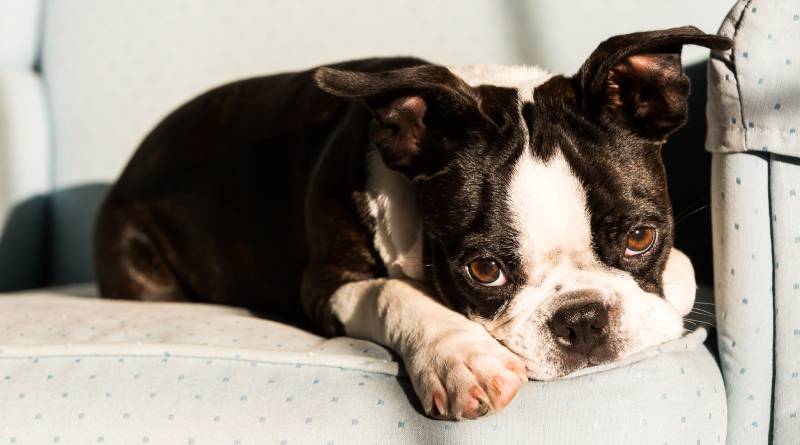
The 5 Steps to Crate Train a Boston Terrier
Crate training your Boston Terrier is highly beneficial to its emotional health and overall well-being. A crate allows it to rely on its instincts and retire into its den if it feels stressed, threatened, unwell, or tired. It’s that space in your home that your dog can call its own, the same way you view your bedroom.
Here are a few steps to make crate training your furry friend successful.
1. Make Introducing the Crate a Positive Experience
If you have just brought home a Boston Terrier puppy, the first step is introducing the crate. You want to make introductions as happy and positive as possible to ensure your pet does not perceive crate time as a punishment.
To accomplish this, don’t lure your dog inside and slam the door. Instead, tie the door open and allow it to walk in and out of the crate voluntarily. It is also vital to ensure the crate is located somewhere your pet considers a happy place, such as where your family spends time together.

2. Make the Crate as Welcoming as Possible
Once your dog explores the crate for a few days, make the space cozy by adding a blanket at the bottom and a few yummy treats. You could also throw your pet’s favorite toy inside and lend it your t-shirt so it can smell you inside the crate.
Keep the door tied open and allow your dog to visit the crate voluntarily. You can also introduce meals inside for at least two days before you proceed to the next step.
3. Close the Door for 5 to 10 Minutes
Once your dog is familiar with its new den and even associates it with mealtimes, close the door when it’s busy eating. Give it time to finish eating, and let it settle in the crate for a few minutes.
Remain calm and within the vicinity to make your pet understand there’s nothing scary about spending time in its crate. Once time is up, open the door and offer your furry friend an irresistible treat, lots of petting, and praises.
4. Slowly Extend Time Spent in the Crate
You must be patient and consistent if you want better chances of enjoying crate training success. Make it a routine to crate your Boston Terrier and slowly increase the time spent in the den.
There are numerous ways to lure your dog into the crate. Apart from offering meals, treats, or toys, you can also use a happy and calm tone to ask it to get inside. The correct method will highly depend on your pet’s personality. Once inside, close the door and stick around until your dog settles down for a nap. Quietly exit the room and monitor how it reacts when you are out of sight.
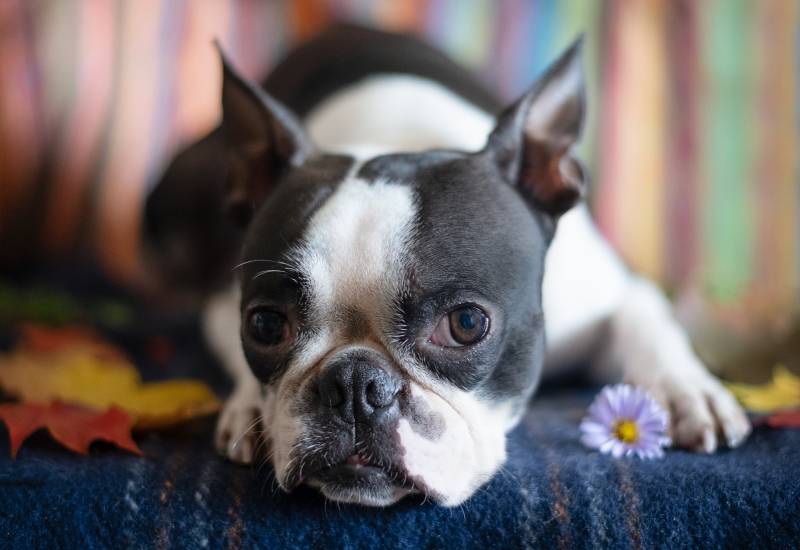
5. Handle Whining Like a Pro
It is common for dogs to start whining immediately after their owners are out of sight. The proper course of action depends on whether you genuinely believe your pet is comfortable.
When was the last time your furry buddy had a potty break? Does it have a comfortable place to nap in the crate? Is it in its best physical health? Could it be thirsty or hungry? Make your judgment call based on the answers to these questions.
Depending on how infuriating you find your dog’s whining, you could feel a little tempted to let it out. Letting it out too soon can be counterproductive to your training because your dog will learn that whining is the easiest way to get out of the crate.
The surest way around the problem is to ignore the whines. Only let your pet out when crate time is over or when it’s time for a meal or potty break.
Summary
Like all other dogs, Boston Terriers are den animals. Investing in a crate ensures your furry friend can satisfy its natural denning instinct. Crates come in handy during potty training and also ensure your pet is safe when you are busy or away and cannot supervise it.
Size is on top of the list of aspects you must consider when choosing a crate.
A 24″L x 18″W x 19″H crate is neither too big nor too small and will ensure your furry companion doesn’t feel trapped or alone. You can also enhance the odds of your pet loving to cuddle up in its den by ascertaining the crate you purchase is sturdy, well-ventilated, and secure.
Think of the right crate as a cozy, private spot your furry buddy can retire to when it wants to relax, recharge, or get away from it all.
Featured Image Credit: Christine Bird, Shutterstock
Contents
- What Is the Right Crate Size for a Boston Terrier?
- Why Choose the Right Crate Size for Your Boston Terrier?
- How Long Can a Boston Terrier Be Crated?
- The 5 Steps to Crate Train a Boston Terrier
- 1. Make Introducing the Crate a Positive Experience
- 2. Make the Crate as Welcoming as Possible
- 3. Close the Door for 5 to 10 Minutes
- 4. Slowly Extend Time Spent in the Crate
- 5. Handle Whining Like a Pro
- Summary

